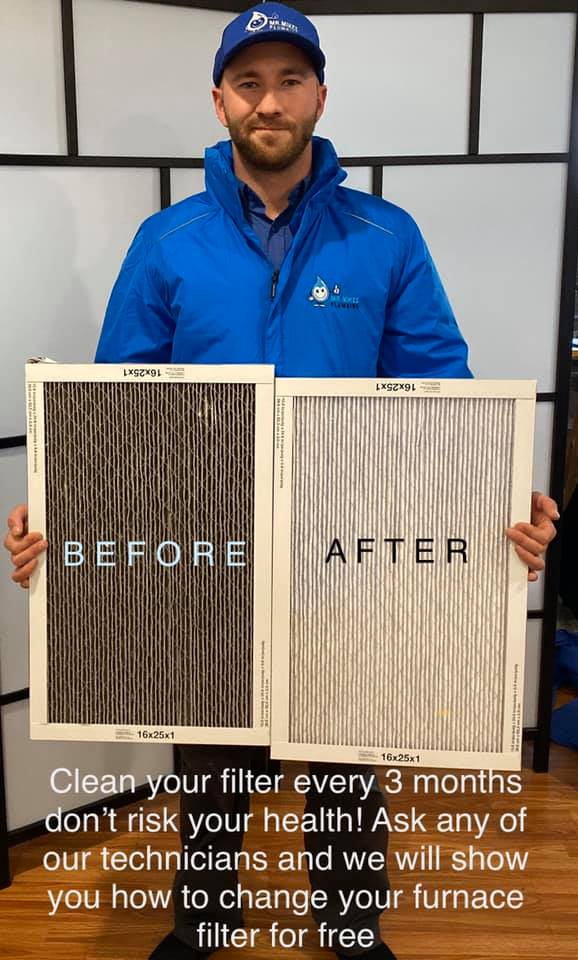
Mr. Mike’s Calgary Plumbing Furnace Filter Cleaning Process
Calgary, Airdrie, Chestermere and surrounding areas don’t forget to change your furnace filters! It’s an easy task that can be taught and we can always show
CALL NOW (403) 520-2040
How to prevent Backflow Contamination
Backflow is the reversal of normal flow process when unintended water, liquids and other harmful substances are forced in the reverse direction and into potable water distribution systems.
The plumbing and water supply system is devised in a way that water flows out of tap under pressure. However under certain conditions or low pressure due to a main burst, the water can flow in the opposite direction. This is called back siphonage and the reverse flow is referred to as backflow. Water backflow may also occur if a pump outlet is inadvertently connected to the water supply. This is called back pressure.
It is very important to prevent backflow as contamination of drinking water can cause serious health problems. Backflow protection should be ensured while installing and/or repairing plumbing systems.
The choice of system may be determined by the size of the pipe, its location and the need to have it inspected. Several methods are available to reduce the chance of cross-connection. Some of these include:
Air Gap: The easiest way to prevent backflow of water is to install an air gap. The air gaps must be twice the diameter of the pipe and not less than 1 inch. Air gap is an unobstructed, vertical space between the water supply and the flood rim of the receptacle.
A physical segregation occurs between the potable water system and the possible source of contamination. Air gaps should be used on direct and inlet connections. They provide protection when toxic material is apparent in water.
Atmospheric Vacuum Breaker: Atmospheric vacuum breakers are the simplest and least expensive back-siphonage preventers. However, they do not protect against backflow backpressure situations.
Atmospheric-type vacuum breakers are similar to pressure-type vacuum breakers but are not spring-loaded and the vented chamber remains open. Atmospheric-type vacuum breakers can be installed only where the contained water is at atmospheric pressure.
Reduced Pressure Principle Backflow Preventer: This system includes a check valve in the inlet and outlet with a vented chamber in the middle. The check valves remain in a closed position via a spring-loaded pin. A test port is also available with this system to determine the operating conditions for the preventer.
Double Check Valve Assembly: A double-check valve assembly is a single device with two check valves in a series flow alignment. The valves are spring-loaded and remain in a closed state. The valves need approximately a pound of pressure to open. The spring loading allows small debris to be captured, yet the valve will seal.
Test apparatuses are included in the system. Double-check valve assemblies may not be permitted in all areas. These are used for non- hazard risk installations. The valve can be used where the contaminated material is gas, steam, food, air or any substance that is offensive but not hazardous. They can also be tested independently, in place, to determine if they are functioning or clogged.
Pressure Vacuum Breaker: Pressure-type vacuum breakers are spring-loaded check devices installed in the flow path with a chamber vented to the atmosphere. The unit has to be installed 12 inches above the usage point. The valve remains open and the vented chamber is closed during normal operation.
When a vacuum occurs, the check closes and the vented chamber opens. If a check valve leakage occurs, only air flows into the potable water line. A pressure-type vacuum breaker requires installation at the highest part of the fixture or system being isolated.
Barometric Loop: When a continuous section of pipe is installed 35 feet high and returns back to the originating level, a barometric loop is created. This section of piping prevents back-siphonage from occurring. At sea level, a column of water can only rise 33.9 feet. Barometric loops cannot protect against back-pressure. They are typically not an option in normal installations.
It should be remembered that cross connection control devices should not be installed in pits or submerged locations. They must be readily available for testing and maintenance.
For more information on the prevention of backflow contamination contact Mr. Mike's Plumbing for assistance and advice.
Related Posts

Calgary, Airdrie, Chestermere and surrounding areas don’t forget to change your furnace filters! It’s an easy task that can be taught and we can always show

What’s the difference between a boiler and a furnace? If your home is heated through the circulation of hot water, then you have a boiler system.
What to do if Your Furnace Won’t Turn on? If your furnace won’t turn on, you might be in a little bit of a panic trying
If you are looking for the best Plumber in Calgary for your services and repairs, please Company with 24/7 Emergency Services
Fill out the form below and we will get back to you ASAP.
If you have an after-hours emergency, call our 24-hour emergency number at (587) 205-8273 Or email us : mike@mrmikesplumbing.ca
Having a Plumbing Emergency?
Quick Links
Quick Links
Contact Us